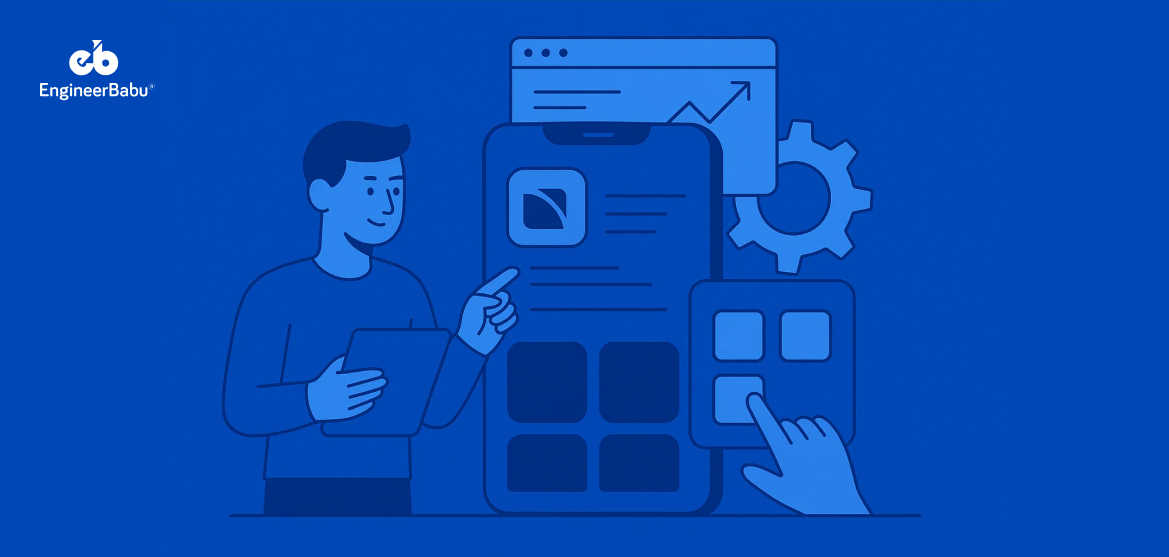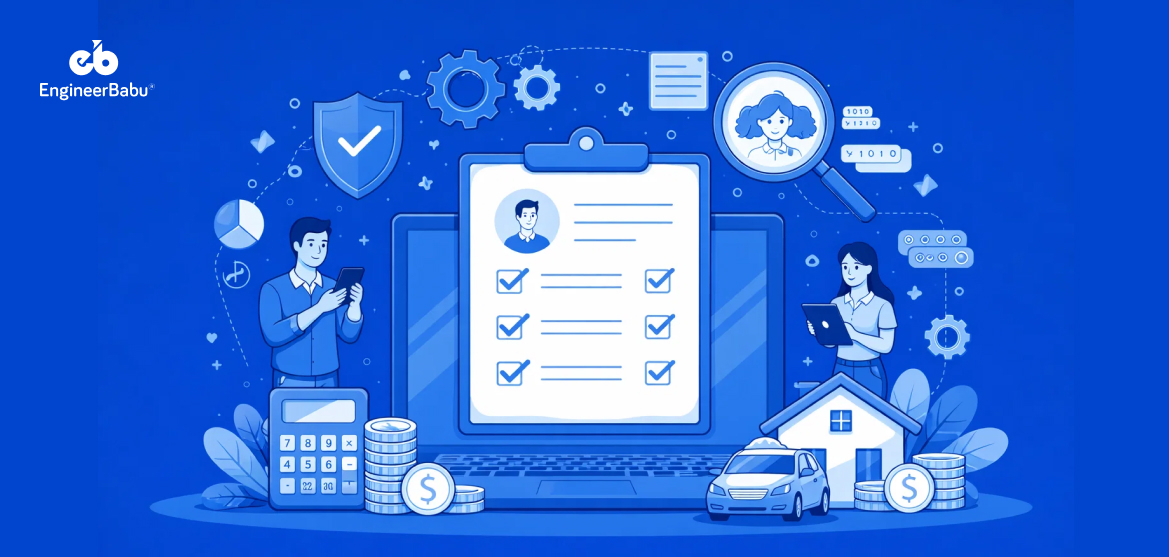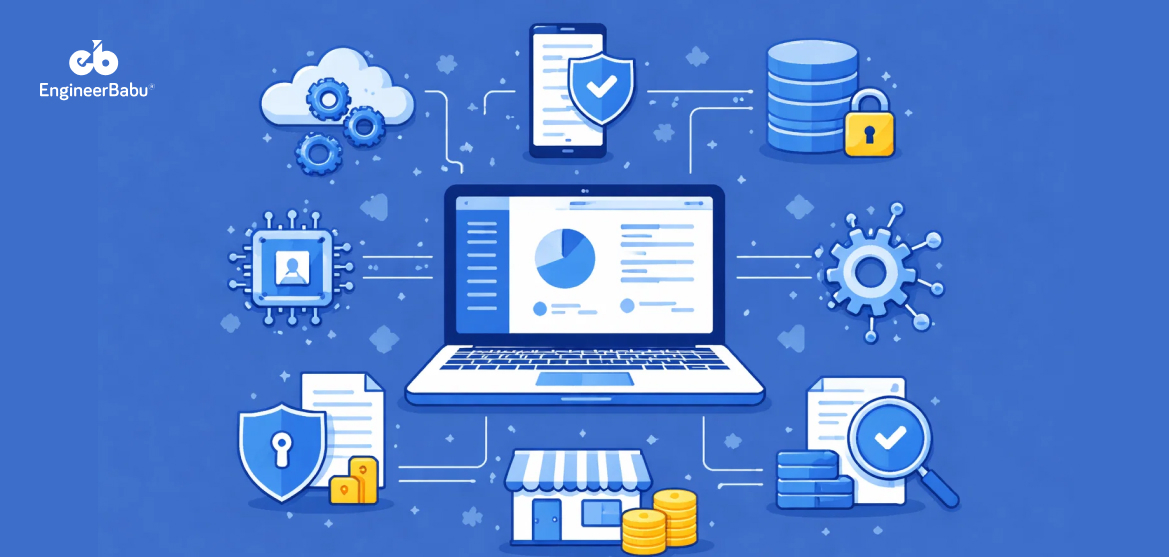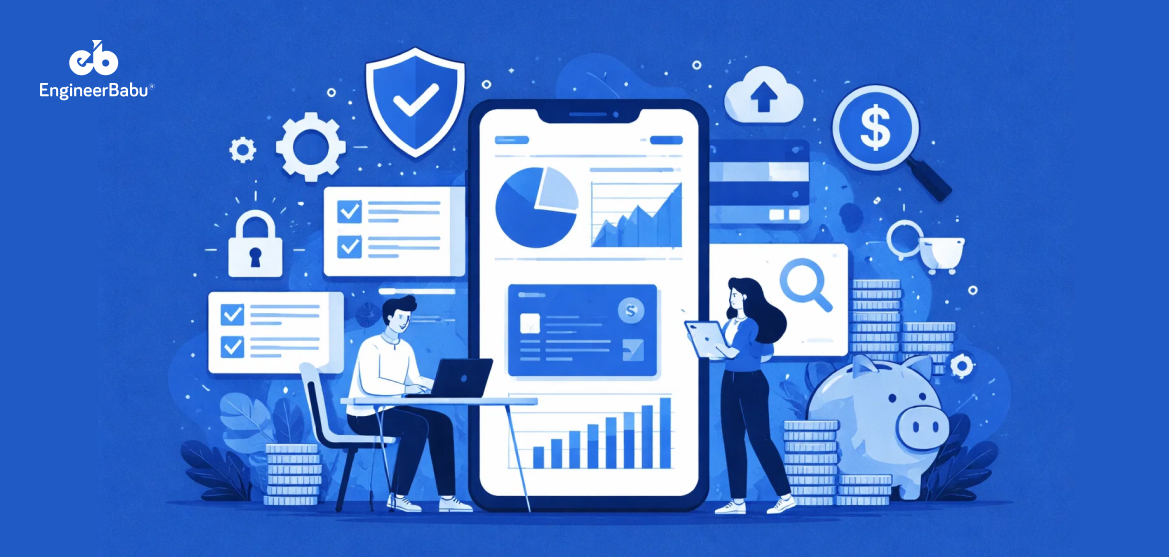Zerodha has changed how Indians invest, making stock trading accessible to first-time investors and seasoned traders alike. Its clean design, flat brokerage model, and reliable performance have helped it capture over 16 million users with assets worth ₹6 lakh crore (Economic Times). That kind of scale shows just how much appetite there is for digital platforms that make finance simpler. Zerodha stands out as a leading online trading app and investment platform in India, offering a comprehensive suite of trading and investment services for both beginners and experienced investors.
For founders and product teams, the appeal of building a similar platform is obvious. The challenge lies in balancing regulatory compliance, secure infrastructure, and user-centric design while also finding a sustainable revenue model. A trading app can’t just execute orders. It needs to build trust, handle data in real time, and deliver a smooth experience even under heavy demand.
This guide walks through the practical steps to create an app that can compete in this space and carve out its own value proposition.
Introduction to Online Trading
Online trading has fundamentally changed the way people participate in the stock market, making investing more accessible than ever before. With the rise of trading apps in India, investors can now trade stocks, mutual funds, and a variety of other financial instruments directly from their smartphones or computers. These trading apps offer a user-friendly interface, advanced tools, and real time market data, empowering both beginners and active traders to make informed trading decisions.
Whether you’re interested in intraday trading, equity delivery trades, or exploring different trading strategies, today’s best trading app options provide the flexibility and features needed to succeed. Opening a trading and demat account with a discount broker is now a seamless process, often completed entirely online through a mobile trading app. This digital approach not only simplifies account setup but also ensures that investors have instant access to the stock market, live market data, and a range of investment options. As a result, online trading has become the preferred choice for those looking to trade stocks, manage mutual funds, and diversify their portfolios with ease and confidence.
Step 1: Market Research & Strategy
Before writing a single line of code, you need absolute clarity on the market you’re stepping into. Trading apps are not just another category of mobile apps; they operate in a high-stakes environment where trust, regulation, and performance decide whether users stay or leave. That makes research and planning your strongest starting point. As part of this process, it’s essential to identify the key features that set successful trading apps apart, such as intuitive interfaces, low brokerage fees, advanced charting tools, and seamless onboarding.
When analyzing the competition, look closely at how Zerodha, Groww, Upstox, and other brokers differentiate themselves—whether through unique features, simplified user experiences, or competitive pricing models. This comparison will help you understand where your app can stand out in a crowded market.
1. Understand your target audience
Are you building for first-time investors, retail investors, long-term investors, and advanced traders who need a simple interface and educational tools, or for experienced traders who want advanced charting and instant order execution? Zerodha’s success came from appealing to both retail and advanced traders by keeping the experience clean while offering depth for those who wanted it. Mapping out personas early will guide everything from features to onboarding flows.
2. Analyse the competition
Zerodha, Groww, and Upstox dominate the Indian market, but each took a different path. Groww started as a mutual fund platform before expanding into stocks, which helped it capture younger investors. Upstox, backed by big-name investors, positioned itself as a discount brokerage with aggressive marketing.
ICICI Direct stands out by offering seamless integration with ICICI Bank accounts, providing users with comprehensive banking services such as 3-in-1 accounts that combine trading, investing, and banking functionalities.
Studying these models helps you identify gaps, such as underserved asset classes, regional language support, or educational features, that your app can fill.
3. Define your business model
Will you charge a flat fee like Zerodha, earn through premium features, or introduce subscription tiers? Each choice comes with trade-offs. A flat fee can help scale quickly, but additional services like investment services such as wealth management, research, and portfolio management, as well as research tools, robo-advisory, or social trading, can provide long-term revenue streams. Think about sustainability from the start rather than bolting it on later.
Discount Broker and Demat Account
A discount broker is a brokerage firm that offers essential trading services at a fraction of the cost charged by traditional brokerage services. By focusing on efficient, technology-driven platforms, discount brokers provide investors with a demat account—an electronic account required for holding and trading securities in India. The best trading apps in India, often operated by discount brokers, attract experienced traders with zero brokerage or low brokerage fees, making active trading and long-term investing more cost-effective.
When evaluating a discount broker, it’s important to consider factors such as account opening fees, ongoing brokerage fees, and the availability of advanced features like algo trading and technical analysis. These advanced tools help traders refine their strategies and make data-driven decisions. Leading discount brokers such as Zerodha, Upstox, and 5Paisa offer a wide array of investment options, including mutual fund investments and direct mutual funds, catering to both new and seasoned investors. By leveraging the benefits of a demat account and the cost savings of a discount broker, investors can maximize their returns while enjoying a streamlined, digital trading experience.
Step 2: Defining Core Features (MVP)
Your MVP should strike the right balance between usability and compliance. Every feature should directly solve a real pain point traders face. When building a trading application, it’s crucial to ensure support for multiple asset classes—such as equities, commodities, currencies, mutual funds, and IPOs—so users can manage all their investments in one place.
Start with essential trading functionalities, including the ability to buy and sell stocks efficiently, real-time price updates, portfolio tracking, and secure onboarding. For future iterations, plan for advanced features like margin trading, which allows users to leverage their positions, and options trading tools that provide advanced charting, backtesting, and automation capabilities for experienced traders.
1. Onboarding and KYC that doesn’t frustrate users
The account opening process is where most apps lose users. A lengthy, manual verification process can frustrate first-time investors, especially compared to the speed and convenience of a fully digital account opening process. By integrating Aadhaar-based eKYC or DigiLocker in India, you can cut the process to minutes while staying compliant, avoiding the paperwork and delays of traditional offline methods. Add biometric login for convenience and two-factor authentication for security. This reassures users that their identity and funds are protected.
2. Trading engine and order types
The real test of any trading app is how quickly and accurately it executes orders during market volatility. To execute trades, users must have a trading account, which is linked to the app during the registration process. This typically involves submitting required documentation and completing account activation steps. Your MVP should support market, limit, and stop-loss orders from day one. Partnering with exchange-approved APIs and running stress tests ensures users won’t face delays or failed trades, the main reason traders switch platforms.
3. Real-time market data and insights
Traders make decisions based on live prices. If your app lags, users can lose money and trust. Integrating NSE/BSE feeds and delivering data via WebSockets keeps updates instant. Watchlists and price alerts add value by helping users track preferred stocks without refreshing constantly. Providing access to in-depth research reports and market analysis further empowers users to make informed investment decisions.
4. Portfolio management services that feel transparent
Users want more than a list of holdings. They expect to see real-time profit and loss, average buy price, and transaction history in one place. Supporting investments in US stocks as part of a comprehensive portfolio allows users to diversify globally and manage all their assets seamlessly. Providing downloadable reports also builds credibility with experienced investors who often track performance outside the app.
5. Payments that are seamless and secure
Deposits and withdrawals are where trust is won or lost. UPI, net banking, and card payments should be integrated for fast transfers. Showing clear timelines for fund settlement (for example, T+1 day for equity sales) sets the right expectations and prevents user frustration.
An MVP with these features is lean but powerful. It proves your platform can handle the essentials before you invest in advanced tools like AI-driven recommendations, social trading, or in-depth analytics.
Step 3: Technical Stack & Architecture
The backbone of any trading app is its architecture. Zerodha’s growth shows how the right technical choices can sustain millions of users and billions of transactions without collapsing under pressure. Supporting advanced research tools, such as those offered by Rupeezy with over 100 indicators, also requires a scalable and flexible technical architecture to ensure robust backend and API support for seamless user experience.
1. Frontend frameworks
Zerodha’s Kite app prioritizes speed and simplicity, which is why its mobile platforms use native development with Swift (iOS) and Kotlin (Android). Native apps perform more reliably during peak market hours when trading volumes surge. For a new build, the decision is whether you want faster development with cross-platform frameworks or the performance edge of native.
2. Backend and APIs
Zerodha developed its own Kite Connect APIs, which allow seamless integration with exchanges and provide third-party developers access to trading functionalities. This shows the importance of designing a backend that not only executes trades quickly but can also be extended for partnerships or ecosystem growth.
3. Real-time infrastructure
During market hours, prices can change multiple times per second. Zerodha handles this by streaming data through WebSockets, ensuring charts, tickers, and order books update instantly. This is critical because even a one-second delay can cost traders money and damage trust in the app.
4. Database and storage
To handle millions of transactions daily, Zerodha uses a hybrid storage approach. Relational databases manage critical transactional data like orders and holdings, while faster NoSQL systems support real-time queries for live feeds. This combination ensures both accuracy and speed.
5. Security architecture
Zerodha protects accounts with two-factor authentication, biometric login, and AES-level encryption. These measures safeguard sensitive financial data and meet regulatory standards. Any trading app entering the market needs to adopt comparable security protocols from the start to maintain trust.
6. Hosting and scaling
Zerodha relies on AWS cloud infrastructure with auto-scaling, which lets the platform manage heavy traffic during opening and closing market hours. Without this elasticity, downtime would be inevitable.
In short, Zerodha’s technical decisions show that reliability, speed, and security are non-negotiable. Any trading app aiming to compete must invest in the same foundations before focusing on advanced features.
Step 4: Design & UX
A trading app lives or dies by its usability. Zerodha’s Kite app became popular not just because of low fees, but because it offered an easy-to-use interface that appeals to both beginners and experienced traders. By stripping away clutter and making complex financial tools feel simple, the app ensures intuitive navigation and accessibility for all users.
When designing apps like Zerodha, integrating educational resources into the user experience is also crucial. This helps new users get started confidently and supports ongoing learning for all traders.
1. Prioritise simplicity
Most trading platforms overload users with data and charts. Kite took the opposite approach, offering a clean interface where essential actions like placing an order, checking a portfolio, creating a watchlist, can be done in seconds. For your app, start by mapping the three or four most common tasks users perform and design the flow around them.
2. Keep charts functional, not overwhelming
Zerodha’s charts are responsive, easy to customise, and update in real time. They provide enough indicators for serious traders without burying beginners in complexity. Striking this balance helps you attract both audiences.
3. Focus on responsiveness
Market data refreshes multiple times per second. Kite ensures that screens respond instantly without freezing or lagging, even during high traffic. A design that feels smooth under pressure is as important as aesthetics.
4. Customisation builds loyalty
Features like personalised watchlists and adjustable dashboards allow users to shape the app around their trading style. These small touches increase engagement and keep traders returning daily.
In short, Zerodha shows that good design is not about adding more, but about removing friction. A trading app that looks clean, responds fast, and adapts to different user needs has a clear edge.
Step 5: Development & MVP Launch
Once your strategy, features, and architecture are defined, it’s time to turn plans into a working product. Zerodha’s journey shows the importance of launching lean, testing rigorously, and scaling only after the core is proven. In future iterations, you can consider adding advisory services to offer personalized investment guidance and research support, further enhancing your platform’s value proposition.
1. Build around the essentials
To build an app like Zerodha, you should focus on essential features. Start with the critical flows: onboarding, KYC, order execution, portfolio tracking, and payments. At this stage, avoid overloading the app with advanced tools. Zerodha focused on getting the basics right first, ensuring that trades executed quickly and reliably before expanding features.
2. Test under real conditions
Trading apps face their toughest moments during market volatility. Stress testing your platform for high concurrency and fast execution is crucial. Zerodha built its reputation by remaining stable during peak hours when other platforms often lagged or crashed.
3. Pilot with a closed group
Before a public release, run a closed beta with selected users. Gather feedback on speed, reliability, and usability. Zerodha’s early growth was fueled by constant iteration based on trader feedback rather than trying to be perfect on day one.
4. Prioritise security and compliance checks
Even at MVP stage, ensure your platform meets regulatory requirements and passes audits. Launching without this groundwork risks both reputation and legality.
5. Partner with an experienced development company
Trading platforms are complex. They require expertise in APIs, real-time data handling, and financial compliance. Hiring fintech developers shortens the time to market and reduces the risk of costly mistakes. Experienced teams already know how to integrate exchange systems, design secure payment flows, and build infrastructure that can scale with user demand.
A successful MVP should prove that your platform can handle the fundamentals better than alternatives. That’s the foundation Zerodha built on and it’s the safest path for new entrants.
Step 6: Iteration, Maintenance & Scaling
Developing a trading app is only the beginning. What keeps users loyal is how quickly you adapt and improve once the product is live. Zerodha’s steady growth came from constant refinement rather than one-time launches.
1. Regular feature upgrades
Zerodha started with a lean product and gradually added advanced charting, APIs for developers, and integrations with mutual funds and bonds. Iterating this way keeps the app lightweight while still evolving with user needs.
2. Continuous performance tuning
Trading volumes surge during market open and close. Zerodha invested heavily in scaling infrastructure so its systems stayed stable during these spikes. Monitoring system load, reducing latency, and upgrading servers must be an ongoing effort, not a one-off project.
3. User feedback loops
Many of Zerodha’s updates came directly from community suggestions. By maintaining open feedback channels, you gain insight into what matters most to traders and avoid wasting resources on unused features.
Apps in India 2025
The Indian financial market is experiencing a rapid transformation, with trading apps in India becoming the go-to platforms for investors of all backgrounds. As we look ahead to 2025, the landscape is dominated by top trading apps that combine cutting-edge technology with robust investment options. These trading apps provide access to stocks, mutual funds, and other financial instruments, all within a single, easy-to-use platform.
What sets the best trading apps apart are their advanced features: real time market data, advanced charting tools, and comprehensive portfolio management services. Apps like Zerodha Kite, Upstox Pro, and Angel One are leading the way, offering zero brokerage or low brokerage fees, which is especially appealing to experienced traders and those making frequent equity delivery trades. When choosing a trading app, investors should prioritize a user-friendly interface, powerful advanced tools, and responsive customer support. Additionally, the ability to trade stocks, access advanced charting, and manage delivery trades efficiently are crucial for staying ahead in the fast-paced Indian financial market. As technology continues to evolve, only those trading apps that deliver a seamless, feature-rich experience will remain at the forefront of online trading in India.
Zerodha’s success wasn’t built overnight. It came from a clear strategy, a focus on essentials, and a commitment to trust and simplicity. For anyone planning to build a trading app like Zerodha, the lessons are straightforward but demanding. You should start with research, develop an MVP that traders can rely on, choose a robust technical stack, and launch with clarity and credibility.
The real work begins after launch. Iterating, scaling, and staying ahead of both user expectations and regulatory changes are what keep an app relevant. Zerodha grew by refining relentlessly, not by trying to do everything from the start.
If you approach development with the same discipline by focusing on reliability, speed, and user experience, you give your app the foundation it needs to earn trust and compete in a crowded market. The path is not easy, but as Zerodha has shown, it is possible to turn a simple idea into a platform that redefines an entire industry.
FAQs
1. How much does it cost to build a trading app like Zerodha?
The cost depends on scope, features, and region of development. A basic MVP with core features like onboarding, KYC, trading, and portfolio tracking can start around $40,000–$60,000. A full-featured platform with advanced charting, analytics, and compliance systems can go well beyond $100,000.
2. How long does it take to develop an app like Zerodha?
A lean MVP can be built in 4–6 months if you have a dedicated team. However, building a stable, scalable trading platform with full compliance and advanced functionality usually takes 9–12 months.
3. What licenses or approvals are needed to launch a trading app in India?
You need to comply with SEBI regulations, complete mandatory KYC/AML processes, and integrate with stock exchanges through approved APIs. Partnering with a registered broker or becoming a member of exchanges like NSE or BSE is also essential.
4. What features should I prioritize in the MVP of a trading app?
Focus on essentials: seamless onboarding with KYC, real-time trading execution, live market data, portfolio management, and secure payment flows. Once these are stable, you can layer in advanced features like analytics, social trading, and educational content.
5. Can EngineerBabu help build a trading app like Zerodha?
Yes. has extensive experience in fintech app development, including trading platforms, payment solutions, and secure financial software. Their team understands compliance, exchange integrations, and real-time data handling, which are crucial for building reliable trading apps.
Conclusion
In conclusion, trading apps in India have revolutionized the investment landscape, offering a convenient, flexible, and accessible way to trade stocks, mutual funds, and a wide range of financial instruments. The best trading app for you should combine a user-friendly interface with advanced tools, zero brokerage or low brokerage fees, and robust customer support. Features like technical analysis, algo trading, and a variety of investment options empower both beginners and seasoned investors to make smarter, more informed decisions.
By carefully selecting the right trading app and discount broker, you can embark on a successful trading journey, leveraging the power of online trading to achieve your financial goals. Whether you’re interested in active trading, long-term investing, or exploring new financial instruments, the Indian financial market offers unprecedented opportunities through innovative trading apps. Now is the perfect time to take advantage of these platforms and make your mark in the world of online trading.




